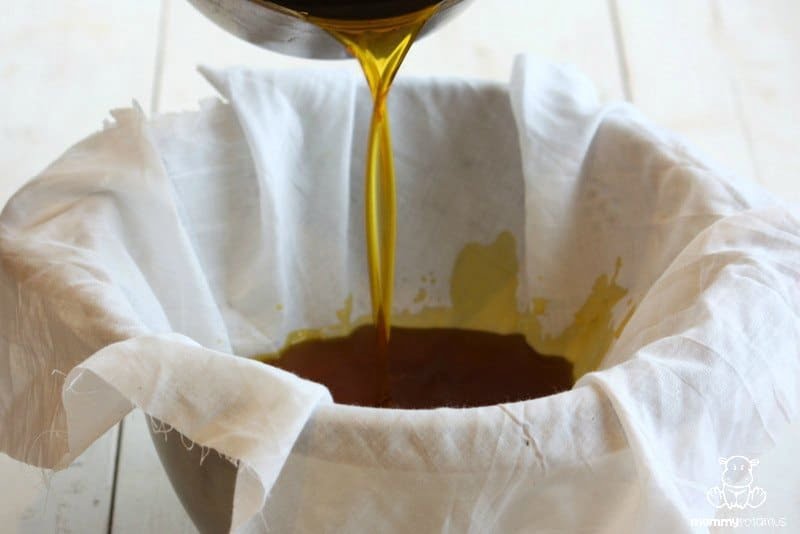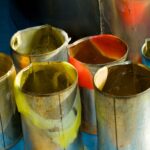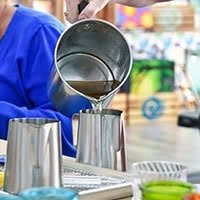Are you looking to create beautifully crafted, all-natural candles? Look no further – we’ve got you covered. In this article, we will be delving into the world of beeswax and its significance in candle making. From exploring its origins to determining the best type for your projects, we’ll cover everything you need to know about choosing the best beeswax for making candles.
Beeswax has been used for centuries as a key ingredient in candle making. Known for its natural, sustainable, and clean-burning qualities, it is a popular choice among candle makers who prioritize eco-friendly and high-quality materials. Whether you’re a seasoned artisan or just starting out, understanding the benefits of using beeswax in your candle making process will help you achieve the perfect final product.
When it comes to beeswax, there are different types available on the market such as yellow, white, and filtered. Each type has its own unique characteristics that can significantly impact the outcome of your candles. Determining which type is the best for your specific needs is crucial in producing high-quality candles. Join us as we explore each type and discover which one is most suitable for your candle making endeavors.
The Benefits of Using Beeswax for Candle Making
Beeswax has long been a favored material for making candles due to its natural, sustainable, and clean-burning qualities. When it comes to choosing the best beeswax for making candles, it’s important to understand the benefits of using this versatile and eco-friendly substance.
One of the key benefits of using beeswax for candle making is its natural origins. Beeswax is a byproduct of honey production by honeybees, making it a renewable and sustainable resource. Unlike paraffin wax, which is derived from petroleum, beeswax is all-natural and does not emit harmful chemicals when burned. This makes it an environmentally friendly choice for those looking to reduce their carbon footprint.
In addition to being natural and sustainable, beeswax is also known for its clean-burning properties. When used in candles, beeswax produces very little soot and smoke compared to other types of waxes. This means that candles made from beeswax are not only better for the environment but also for indoor air quality. For individuals with respiratory sensitivities or allergies, using beeswax candles can provide a healthier and more enjoyable experience.
Overall, the benefits of using beeswax for candle making make it a top choice for crafters and hobbyists looking to create high-quality candles. The natural, sustainable, and clean-burning qualities of beeswax make it the best option for those who prioritize environmental responsibility and superior performance in their candle-making endeavors.
| Benefit | Description |
|---|---|
| Natural Origins | Beeswax is a renewable resource produced by honeybees |
| Clean-Burning | Produces minimal soot and smoke compared to other waxes |
Types of Beeswax
When it comes to making candles, the type of beeswax used can have a significant impact on the overall quality of the finished product. There are three main types of beeswax commonly used in candle making: yellow, white, and filtered. Each type has its own unique characteristics and benefits, but which one is the best for candle making?
Yellow Beeswax
Yellow beeswax is the most natural and unprocessed form of beeswax available. It has a natural golden color and a sweet, honey-like aroma. Because it undergoes minimal processing, it retains more of its natural properties, including beneficial compounds like propolis and pollen. However, some candle makers find that the natural color of yellow beeswax can affect the hue of their candles, especially if they are looking to achieve vibrant or pastel colors.
White Beeswax
White beeswax is typically bleached to remove its natural color and scent, resulting in a clean and odorless wax. This makes it a popular choice for candle makers who want their candles to be free from any natural fragrance or color influences. White beeswax also tends to have a smoother texture than yellow beeswax, making it easier to work with when creating intricate candle designs or textures.
Filtered Beeswax
Filtered beeswax undergoes a process where impurities and debris are removed, resulting in a cleaner and more refined wax. This type of beeswax can come in various shades ranging from light yellow to off-white, depending on the level of filtering it has undergone. Filtered beeswax offers a balance between the natural properties of yellow beeswax and the clean appearance of white beeswax, making it a versatile option for candle making.
While each type of beeswax has its own merits, there is no definitive “best” choice for candle making. The decision ultimately depends on the specific preferences and priorities of the candle maker. Some may prioritize purity and minimal processing, while others may prioritize color consistency or fragrance neutrality. Understanding the unique qualities and characteristics of each type of beeswax is crucial in determining which one is best suited for any given candle-making project.
By carefully considering these factors, candle makers can confidently select the best beeswax for making candles according to their individual needs and preferences. Whether it’s yellow, white or filtered beeswax – each brings something special to the table when it comes to creating beautiful candles that not only look stunning but also burn cleanly and efficiently.
Where to Source the Best Beeswax for Making Candles
When it comes to sourcing beeswax for making candles, there are several options available to consider. Local beekeepers, online suppliers, and specialty stores each offer their unique benefits and considerations. Here are some important factors to keep in mind when choosing where to source the best beeswax for making candles:
- Local Beekeepers: One of the most direct ways to obtain high-quality beeswax is by purchasing it directly from local beekeepers. By doing so, you not only support local businesses and farmers but also have the opportunity to see firsthand how the beeswax is produced. This can provide a greater sense of transparency and confidence in the product’s quality. Additionally, many local beekeepers take pride in producing pure and natural beeswax without additives or chemicals.
- Online Suppliers: The internet offers a vast array of options for purchasing beeswax, with countless online suppliers specializing in natural products like beeswax for candle making. Shopping online provides convenience and access to a wide variety of options, including different types of beeswax such as yellow, white, and filtered. When choosing an online supplier, it’s important to look for reputable sources with positive customer reviews and a commitment to sustainable and ethical practices.
- Specialty Stores: For those who prefer a more hands-on shopping experience, specialty stores that focus on natural or craft supplies often carry high-quality beeswax for candle making. These stores may offer additional benefits such as knowledgeable staff who can provide guidance on selecting the best type of beeswax for specific candle-making projects. Visiting a specialty store also allows you to see and feel the product before making a purchase.
Ultimately, whether you choose to source your beeswax from local beekeepers, online suppliers, or specialty stores will depend on your individual preferences, values, and access. Each option offers its own set of advantages when it comes to obtaining the best beeswax for making candles.
How to Choose High-Quality Beeswax for Candle Making
When choosing beeswax for candle making, it is important to consider several factors to ensure that you are using high-quality beeswax that will result in beautiful, clean-burning candles. The best beeswax for making candles will have specific characteristics that contribute to its overall quality and performance. Here are some key factors to consider when selecting beeswax for candle making:
Purity and Color
The purity of the beeswax is a crucial factor in determining its quality for candle making. Look for beeswax that is 100% pure and free from any additives or chemicals. Additionally, the color of the beeswax can also impact the appearance of your candles.
Yellow beeswax has a natural golden hue while white beeswax has been filtered to remove impurities and has a lighter color. Consider whether you want the natural color of the beeswax to show through in your candles or if you prefer a cleaner, more uniform look.
Scent and Fragrance
Some types of beeswax may retain a subtle honey fragrance, which can add a lovely scent to your homemade candles. If you prefer unscented candles or want to add your own fragrance oils, then selecting unscented beeswax would be best. Consider whether you want the natural scent of the beeswax to complement or enhance the aroma of your candles.
Source and Quality Assurance
When sourcing beeswax for candle making, it’s important to choose reputable suppliers who prioritize quality and sustainability. Look for locally sourced and organic options whenever possible, as this supports local beekeepers and ensures that you are getting high-quality beeswax with minimal environmental impact.
Check for certifications such as organic or fair trade, which can provide assurance of ethical production practices. By considering these factors, you can select the best beeswax for making candles and create beautiful, eco-friendly creations that will delight both yourself and those who receive them as gifts.
Tips for Processing and Preparing Beeswax for Candle Making
Beeswax is a versatile and natural material that has been used for centuries in candle making. Its origins can be traced back to the honeycombs constructed by bees, which are then harvested and processed into beeswax. Known for its clean-burning and sustainable qualities, beeswax is a popular choice for creating high-quality candles.
When it comes to preparing beeswax for candle making, filtering, melting, and scenting are important steps to ensure that you are working with the best quality product. Filtering the beeswax removes any impurities or debris that may have been collected during the harvesting process. This helps to create a smoother and more refined candle wax, resulting in a cleaner burn and better overall quality.
Melting beeswax requires careful attention to avoid overheating or scorching the material. It’s best to use a double boiler or a dedicated wax melter to slowly melt the beeswax at a low temperature. This gradual approach helps preserve the natural properties of the beeswax and prevents any damage or discoloration.
Scenting beeswax candles is another popular technique that adds an extra layer of ambiance to your creations. Whether using essential oils or fragrance oils, it’s important to choose high-quality scents that are compatible with beeswax.
Adding too much fragrance oil can affect the burn quality of the candle, so it’s best to start with small amounts and test your preferred scent strength. Ultimately, proper filtering, melting, and scenting techniques will contribute to producing the best beeswax for making candles.
Best Practices for Using Beeswax in Candle Making
When it comes to using beeswax for candle making, there are a few best practices to keep in mind to ensure that you create beautiful and high-quality candles. From molding to pouring and finishing techniques, every step is important in the candle-making process. Here are some best practices for using beeswax in candle making:
1. Molding Techniques:
When it comes to molding beeswax candles, there are various options to consider. Whether you choose traditional pillar molds, decorative silicone molds, or classic taper molds, it’s essential to select the right mold for your desired candle shape. Additionally, properly preparing and conditioning the mold with a release agent such as vegetable oil or non-stick spray can help ensure that your candles come out smoothly.
2. Pouring Techniques:
Proper pouring techniques are crucial when working with beeswax. It’s important to melt the beeswax to the correct temperature before pouring it into the prepared molds. Slow and steady pouring can help prevent air bubbles from forming in the candles, resulting in a smooth and even finish.
3. Finishing Techniques:
Once your beeswax candles have cooled and solidified, there are various finishing techniques you can use to enhance their appearance. This includes trimming any excess wick, smoothing out any imperfections on the surface of the candle, and adding decorative touches such as carving or embossing.
By following these best practices for using beeswax in candle making, you can create beautifully crafted candles that showcase the natural beauty of beeswax while enjoying a clean-burning and sustainable product made from the best beeswax for making candles.
Troubleshooting Common Issues With Beeswax Candles
When making candles with beeswax, it is important to be aware of the potential issues that may arise during the process. Common problems that can occur include sinking, tunneling, and soot formation. Understanding how to troubleshoot these issues will help you create high-quality beeswax candles.
Sinking is a common problem with beeswax candles and can be caused by a few different factors. To prevent sinking, it is essential to ensure that the wick is properly centered in the mold or container when pouring the hot beeswax. Additionally, allowing the candle to cool at room temperature without any drafts can help prevent sinking.
Tunneling occurs when a candle burns straight down through the center, leaving excess wax around the edges. This issue can be prevented by using a properly sized wick for the diameter of the candle and ensuring that the first burn creates an even wax pool across the entire surface of the candle. Choosing a wider wick or trimming the wick before each use can also help prevent tunneling.
Soot formation is another common issue with beeswax candles and can detract from their aesthetic appeal. To reduce soot production, it is important to use a high-quality beeswax that has been properly filtered and processed. Additionally, keeping the wick trimmed to 1/4 inch before each use and avoiding drafts while burning can help minimize soot formation.
It’s important to note that troubleshooting issues with beeswax candles may require some trial and error, but by following these tips and techniques, you can create beautiful and clean-burning candles with the best beeswax for making candles.
| Troubleshooting Tips for Beeswax Candles | Prevention Techniques |
|---|---|
| Sinking | Ensure proper wick placement and cooling conditions |
| Tunneling | Use an appropriate sized wick and create an even wax pool during first burn |
| Soot Formation | Use high-quality filtered beeswax & keep wick trimmed |
Conclusion
In conclusion, the art of candle making with the best beeswax is a truly beautiful and intricate process. From its natural origins to its clean-burning qualities, beeswax offers numerous benefits for those looking to create their own candles. Whether it’s sourcing locally from beekeepers, purchasing from online suppliers, or visiting specialty stores, there are various options for finding the highest quality beeswax for candle making.
When choosing the best beeswax for candle making, it’s important to consider factors such as color, purity, and scent. By carefully processing and preparing the beeswax through filtering, melting, and scenting, candle makers can ensure they achieve the desired results and create stunning final products. Additionally, adhering to best practices in molding, pouring, and finishing techniques will help to avoid common issues such as sinking, tunneling, and soot.
Overall, creating candles with the best beeswax is not only a rewarding artistic endeavor but also an environmentally friendly and sustainable practice. With proper care and attention to detail throughout the process of sourcing and working with beeswax, candle makers can produce high-quality candles that illuminate any space with their natural beauty and warm glow.

Welcome to my candle making blog! In this blog, I will be sharing my tips and tricks for making candles. I will also be sharing some of my favorite recipes.





